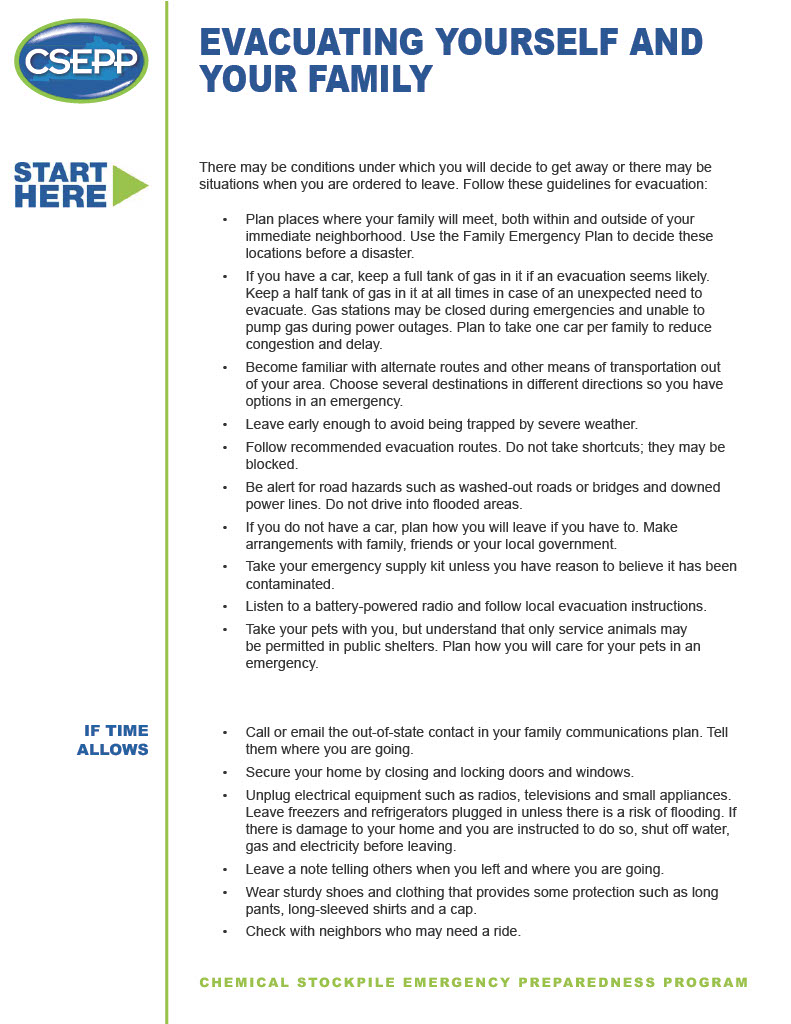Evacuating Yourself and Your Family Instructions (PDF)
Download Evacuating Yourself and Your Family instructions and discuss the guidelines for relocation with your family.

START HERE
There may be conditions under which you will decide to get away, or there may be situations when you are ordered to leave. Follow these guidelines for relocation:
- Plan places where your family will meet, both within and outside of your immediate neighborhood. Use the Family Emergency Plan to decide these locations before a disaster.
- If you have a car, keep a full tank of gas in it, if relocation seems likely. Keep a half tank of gas in it at all times in case of an unexpected need to relocate. Gas stations may be closed during emergencies and unable to pump gas during power outages. Plan to take one car per family to reduce congestion and delay.
- Become familiar with alternate routes and other means of transportation out of your area. Choose several destinations in different directions so you have options in an emergency.
- Leave early enough to avoid being trapped by severe weather.
- Follow recommended relocation routes. Do not take shortcuts; they may be blocked.
- Be alert for road hazards such as washed-out roads or bridges and downed power lines. Do not drive into flooded areas.
- If you do not have a car, plan how you will leave if you have to. Make arrangements with family, friends or your local government.
- Take your emergency supply kit, unless you have reason to believe it has been contaminated.
- Listen to a battery-powered radio, and follow local relocation instructions.
- Take your pets with you, but understand that only service animals may be permitted in public shelters. Plan how you will care for your pets in an emergency.
IF TIME ALLOWS
- Call or email the out-of-state contact in your family communications plan. Tell them where you are going.
- Secure your home by closing and locking doors and windows.
- Unplug electrical equipment such as radios, televisions and small appliances. Leave freezers and refrigerators plugged in, unless there is a risk of flooding. If there is damage to your home and you are instructed to do so, shut off water, gas and electricity before leaving.
- Leave a note telling others when you left and where you are going.
- Wear sturdy shoes and clothing that provides some protection, such as long pants, long-sleeved shirts and a cap.
- Check with neighbors who may need a ride.
Disaster Tips PSA: Evacuation
Plan an evacuation route for your family now. YouTube, Sep 06, 2018, 0:10